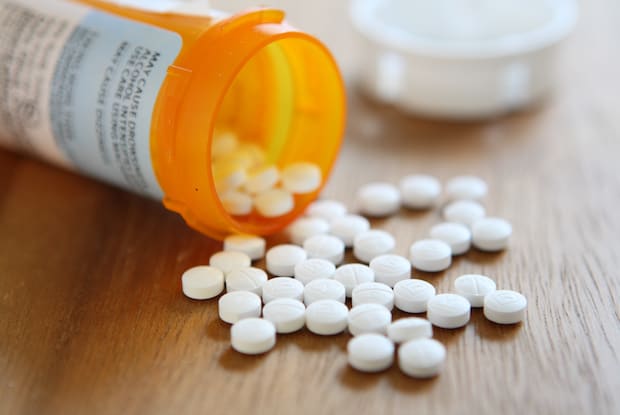Table of Contents
III. What Causes Type 2 Diabetes?
a. How Does Type 2 Diabetes Occur?
b. Risk Factors for Type 2 Diabetes
IV. Symptoms of Type 2 Diabetes
V. How is Type 2 Diabetes Treated?
Overview
Type 2 diabetes is a chronic disease that prevents your body from using insulin correctly. Type 2 diabetes affects more than 30 million Americans. While it is most common in adults over 45, it can develop at any age. Type 2 is the most common form of diabetes. More than 90 percent of diabetes patients in the United States suffer from this form of the condition. [1]
If you have recently been diagnosed with type 2 diabetes, have had the condition for a while, or know someone that has it, keep reading to learn more about the condition. Learn about the symptoms, causes, and how type 2 diabetes can be treated with medications such as metformin (Glucophage), linagliptin (Tradjenta), and sitagliptin (Januvia).
Insulin & Glucose
In order to understand the causes of diabetes, it is important to understand the effect of glucose and insulin in the body.
a. What is Glucose?
Glucose is a simple form of sugar that is found in the blood and is sometimes referred to as simply ‘blood sugar.’ Glucose is produced in the liver but is also found naturally in many of the foods that we eat, including fruits, vegetables, bread, and dairy products. When your glucose levels are abnormal, your body will not function in the same way as usual.[2] Unregulated glucose levels can have serious effects, including comas, blindness, neuropathy, and heart disease.

b. What is Insulin?
Insulin is a hormone that is produced by the pancreas. Insulin converts glucose into energy. This hormone also controls levels of glucose in your blood, helps to store glucose in muscles and fat, and helps control the body’s metabolism. [3] Insulin is a very important hormone in the body and without it, you can suffer from organ and blood vessel damage. While type 1 diabetes patients produce an insufficient amount of the hormone, type 2 patients cannot use what is produced effectively.
What Causes Type 2 Diabetes?
a. How Does Type 2 Diabetes Occur?
Type 2 diabetes is caused by a combination of genetic and lifestyle factors. Research has found DNA strands that affect how your body produces insulin. Type 2 diabetes occurs when body’s cells become resistant to insulin. Your body’s immediate reaction is to create more insulin, but it is unable to keep up. Eventually, glucose builds up in the blood rather than moving into the cells where it is needed for energy. [4]
b. Risk Factors for Type 2 Diabetes
Usually, type 2 diabetes is caused by a combination of factors.
Being Overweight: One of the primary risk factors for this condition is extra weight. According to the World Health Organization (WHO), type 2 diabetes is ‘largely the result of excess body weight and physical inactivity.’ [5] People that are overweight or obese are more likely to suffer from insulin resistance. The areas where your body stores fat is also a risk factor. Those with a lot of weight around their stomach have a higher risk.

Genetics, Age & Ethnicity: Type 2 diabetes is a partially hereditary condition, and you are more likely to get the condition if you have a parent or sibling with the disease. While diabetes can occur at any age, it is more common in people older than 45. Certain ethnicities are also more likely to develop diabetes, especially people with African, Asian, or Hispanic heritage. [6]
Medical Conditions: There are several other medical conditions that can increase your risk of diabetes. These include high blood pressure, high cholesterol, obstructive sleep apnea, polycystic ovary syndrome, and psychiatric disorders such as depression, schizophrenia, and bipolar disorder.[6]
Symptoms of Type 2 Diabetes
The symptoms of type 2 diabetes depend on your blood sugar levels. Often, these symptoms develop over a long period of time, and may not be recognized for several years. If you notice the following symptoms, then you should visit your doctor to have your blood sugar levels tested:
- Frequent urination, particularly during the night
- Increased thirst
- Extreme hunger
- Unexplained or easy weight loss
- Blurred vision
- Fatigue
- Feeling irritated
- Dark rashes around the neck or armpits
- A tingling or numb feeling in the hands and feet
- Frequent infections
- Slow-healing wounds [4]
a. Gender-Specific Symptoms
Other symptoms of type 2 diabetes are gender-specific. Women with diabetes may have dry and itchy skin, repetitive yeast infections, or urinary tract infections. For males, additional symptoms can include poor muscle strength, lowered sex drive, and erectile dysfunction (ED). [7]
How is Type 2 Diabetes Treated?
a. Diagnosis
Usually, testing for diabetes consists of blood tests. These will occur on two different days as blood sugar levels may fluctuate. However, if you have many symptoms or a very high blood glucose level, then one test may be satisfactory. There are several different tests that may be used.
A1C Test: This test shows a rough average of your blood sugar for the previous three months. Although it does not give an accurate daily reading, it shows your doctor how effective your blood sugar control is over a sustained period of time. [8]
Fasting Plasma Glucose: This is also known as a fasting blood sugar test. Before taking this test, you should avoid eating or drinking anything other than water for eight hours. This shows a reading of your blood sugar while on an empty stomach. [4]
Oral Glucose Tolerance Test (OGTT): This test is designed to show your body reacts to sugar. It should be taken before and two hours after drinking something sweet. [4]

b. Medications
There are several different medications used to control blood sugar levels for patients with type 2 diabetes. Usually, the first medications to be prescribed for type 2 diabetes is metformin (Glucophage). [9] Metformin works by reducing the amount of glucose that is produced by the liver and making your body more effective at using insulin. Other common medications that lower blood sugar levels include linagliptin (Tradjenta) and sitagliptin (Januvia).
An alternative form of medication helps the kidneys filter out glucose. These drugs are known as SGLT2 inhibitors and include canagliflozin (Invokana) and empagliflozin (Jardiance).
c. Diet and Exercise
Being overweight or obese is the biggest risk factor for developing type 2 diabetes. Therefore, having a healthy lifestyle is very important. You should attempt to eat a healthy diet while doing 30 minutes of moderate exercise on most days, such as a brisk walk.
The content in this article is intended for informational purposes only. This website does not provide medical advice. In all circumstances, you should always seek the advice of your physician and/or other qualified health professionals(s) for drug, medical condition, or treatment advice. The content provided on this website is not a substitute for professional medical advice, diagnosis or treatment.
